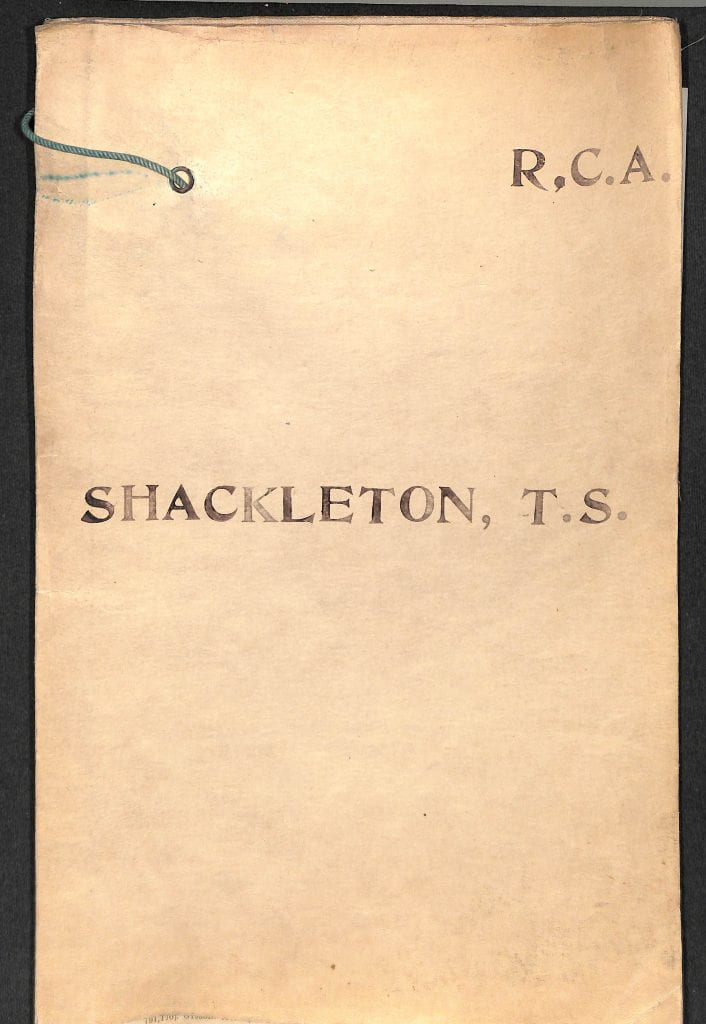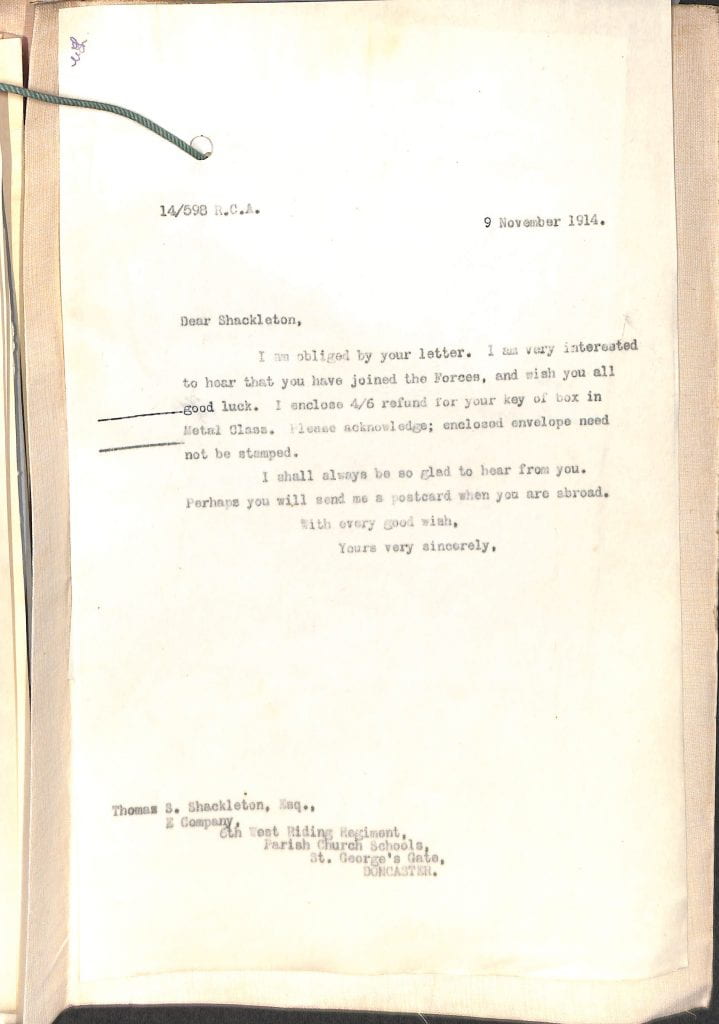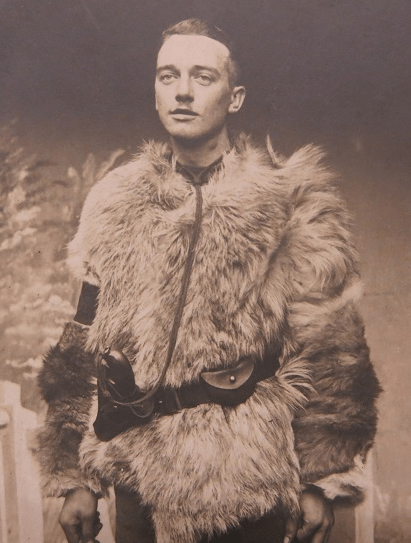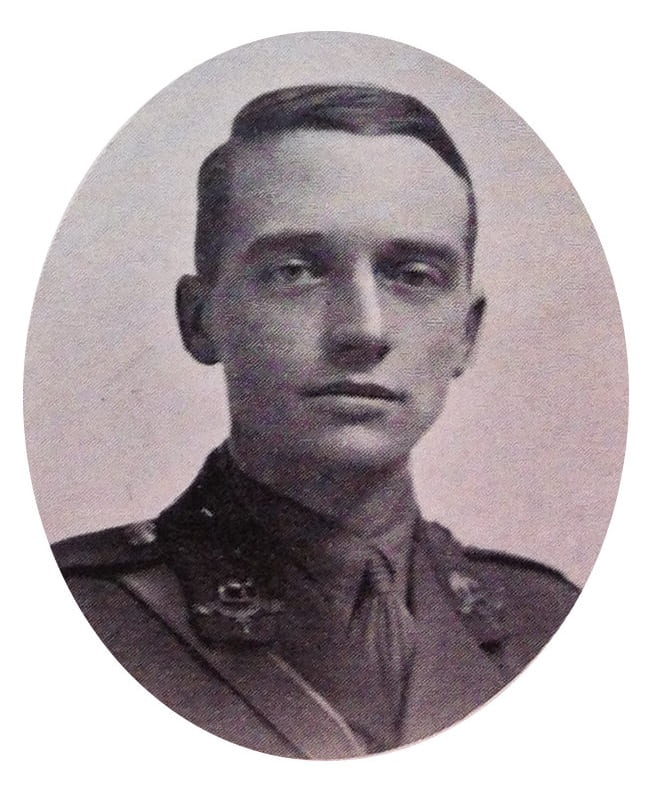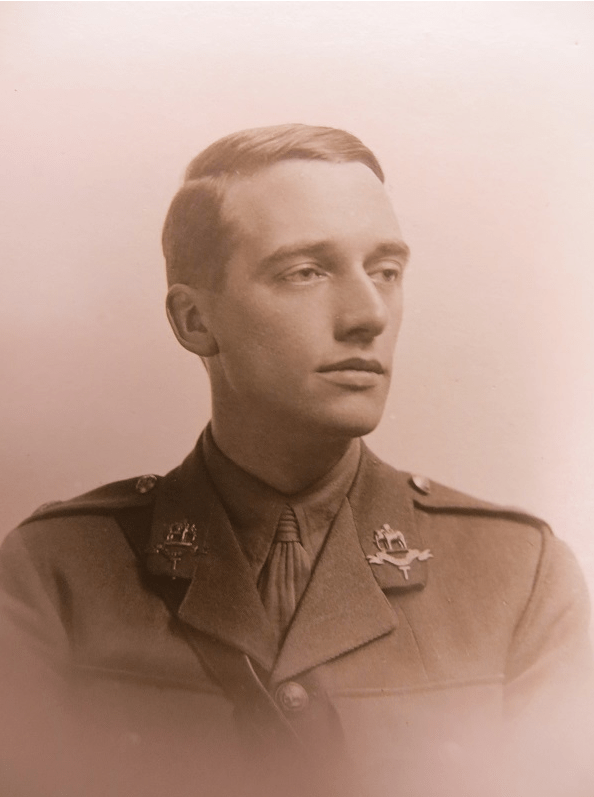
Born: 16 December 1890
Died: 5 May 1917
Studied at the RCA: October 1912–July 1914
Thomas and his slightly older sister Mary were raised by their mother after the death of their father, a coal merchant. By the time the 1911 census was taken their mother had also passed away and Mary, then an assistant teacher, is described as head of the household and Thomas as an art student. He arrived at the College initially as a fee-paying student, suggesting they were not entirely dependent on her earnings, but his desire to become an art teacher may have been in the hope of finding steady work in the future rather than on direct experience. Equally, perhaps he simply had a fondness for education. Even when studying at the College he seems to have kept a firm connection to his former school, Keighley Grammar – he was at their annual summer camp in Wales when war was declared.
During his second year at the College it seems likely that Thomas was concentrating on design, but he did not return for a third year. He wrote briefly to the Registrar in November 1914, asking to be reimbursed his locker-key money, and, more importantly, to let the College know he was now training with E company of the 6th Battalion of the West Riding Regiment based at Skipton, and expecting to leave for France soon. Army life was not entirely new to him: for just over three years from 1910, and overlapping with his first year at the College, he had been a volunteer with the same regiment.
From April 1915, when the battalion left to fight in the region south of Dunkirk and, the following year in the Battle of the Somme, Thomas rose in the ranks seemingly unscathed. At some point late in 1916 he returned to England for officer training, gaining his commission as a probationary Second Lieutenant in December.
In March 1917, he returned to France to serve as an officer with the 2/6th Battalion, West Riding Regiment, part of the inexperienced 62nd (2nd West Riding) Division. For many of the division’s soldiers a joint operation with Australian troops in April would be their first and last. The aim was to capture Bullecourt, a village bordered by the Germans’ defensive Hindenburg Line. But any hope of success was dashed when crucial support from tanks failed to materialise, leaving the soldiers exposed. When a second attempt was made on 3 May and the tanks did join in, their poor design meant they were unable to prevent many more casualties.
The surviving soldiers of the 2/6th Battalion that day were relieved by other troops, and moved back and away from the fighting to rest. On the evening of the next day, however, they were ordered to move on to make room for other exhausted soldiers. They were sent to a site, aptly called Railway Embankment that, worryingly, ran parallel to the Hindenburg Line. It was on top of this at 2am that night that Thomas was killed by a shell. Why he was there is not apparent.
Thomas is buried at Ecoust Military Cemetery, Ecoust-Saint-Mein, Pas-de-Calais, France. He is also commemorated in the Keighley War Memorial Window.

